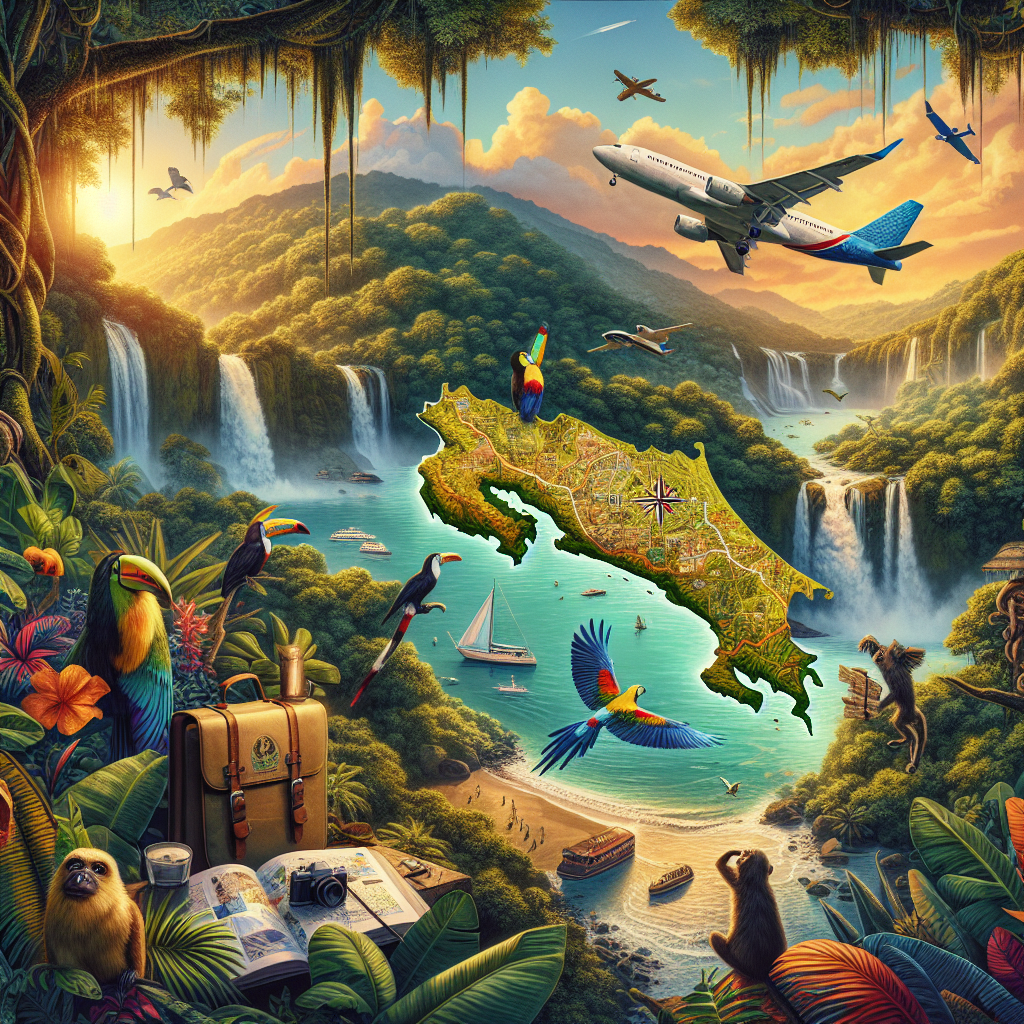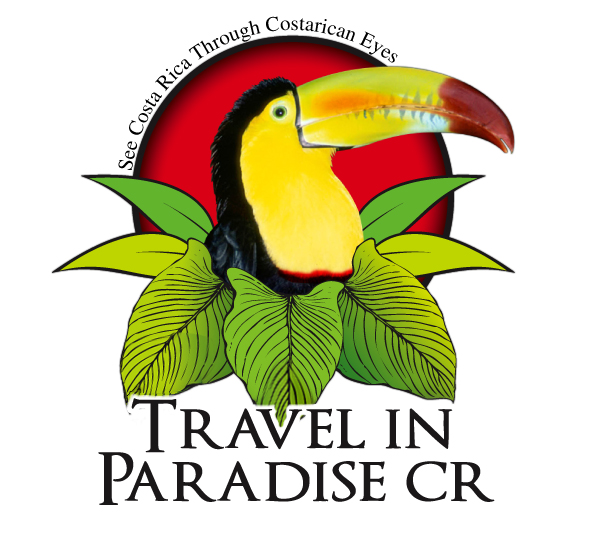
by | Nov 11, 2025 | Uncategorized
Eco-Friendly Travel in Costa Rica: How to Choose Sustainable Tours and Packages 🌿
Welcome to the lush landscapes of Costa Rica, a paradise for nature lovers and eco-conscious travelers alike! If you’re planning a trip to this beautiful country and want to minimize your carbon footprint, you’re in the right place. In this guide, we’ll explore how to select sustainable tours and packages that align with your eco-friendly values. 🌍
Table of Contents
1. Why Choose Eco-Friendly Travel in Costa Rica?
2. Understanding Sustainable Tourism
3. Tips for Selecting Sustainable Tours
4. Recommended Eco-Tour Providers
5. Conclusion
6. FAQs
Why Choose Eco-Friendly Travel in Costa Rica? 🌱
Costa Rica is a leader in sustainability, with a commitment to preserving its rich biodiversity and natural beauty. By choosing eco-friendly travel options, you not only support the local economy but also contribute to conservation efforts. Plus, experiencing the country through a sustainable lens offers a deeper connection with nature and the local culture. 🌺
Understanding Sustainable Tourism 🌎
Sustainable tourism focuses on reducing the negative impacts of travel on the environment and local communities. It involves choosing operators that prioritize conservation, energy efficiency, and community engagement. Look for certifications like the Costa Rican Certification for Sustainable Tourism (CST) when booking your tours. These certifications ensure that the company adheres to sustainable practices, benefiting both the environment and the people. 🏆
Tips for Selecting Sustainable Tours 🚶♀️
1. Research Tour Operators
Before you book, research the tour operators. Check their websites for sustainability policies, community involvement, and environmental practices. A reputable eco-tour company will be transparent about their efforts and achievements. 🔍
2. Look for Certifications
As mentioned, certifications like CST are crucial. They indicate that the operator follows strict sustainability guidelines. Other international certifications to consider include Green Globe and EarthCheck. 🛡️
3. Choose Small Group Tours
Opt for tours that limit group sizes to minimize environmental impact and enhance your experience. Smaller groups often mean personalized attention and a more intimate connection with your surroundings. 👥
4. Ask Questions
Don’t hesitate to ask tour operators about their practices. Inquire about how they reduce waste, conserve energy, and contribute to local communities. Their willingness to answer will reflect their commitment to sustainability. ❓
Recommended Eco-Tour Providers 🌿
Here are a few recommended eco-tour providers in Costa Rica:
1. Green Costa Rica Tours
Known for their dedication to sustainability and community projects, they offer a range of eco-friendly packages that cater to nature enthusiasts. 🦜
2. EcoAdventure Costa Rica
With a focus on low-impact tourism, EcoAdventure offers experiences that highlight the country’s natural beauty while conserving its resources. 🌊
3. Rainforest Ecotours
This operator specializes in educational tours that promote conservation awareness and support local initiatives. 🌳
Conclusion 🌟
Choosing eco-friendly travel options in Costa Rica is not only beneficial for the environment but also enriches your travel experience. By supporting sustainable tours and packages, you help preserve the natural beauty of this incredible country for future generations. Happy eco-adventuring! 🏞️
FAQs ❓
1. What makes a tour sustainable?
Sustainable tours focus on minimizing environmental impact, supporting local communities, and promoting conservation efforts. They often have certifications and clear sustainability policies in place.
2. Are eco-friendly tours more expensive?
Not necessarily. While some sustainable tours might have a higher upfront cost, they often provide a richer and more meaningful experience, and the price difference supports ethical practices.
3. How can I verify the sustainability claims of a tour operator?
Look for third-party certifications, read reviews from past travelers, and don’t hesitate to ask the operators directly about their sustainability practices.
4. Can I travel sustainably on a budget?
Absolutely! Look for affordable eco-lodges, choose public transportation or shared transfers, and participate in volunteer programs that offer free or discounted stays.
Remember, every small step towards sustainable travel counts! 🌍
Travel in paradise Costa Rica

by | Nov 10, 2025 | Uncategorized
Navigating Costa Rica: A Comprehensive Travel Agency Guide for First-Time Visitors
Are you dreaming of lush rainforests, stunning beaches, and vibrant wildlife? 🌴 Costa Rica might just be your paradise on earth. As a first-time visitor, navigating this beautiful country can be daunting. But worry not! This guide will help you explore Costa Rica like a seasoned traveler.
Table of Contents
1. Understanding Costa Rica: A Brief Overview
2. Choosing the Right Travel Agency 🏝️
3. Must-Visit Destinations 🌺
4. Essential Travel Tips 🚗
5. Conclusion: Embrace the Pura Vida
6. FAQs
Understanding Costa Rica: A Brief Overview
Costa Rica is a small country located in Central America, bordered by Nicaragua to the north and Panama to the southeast. Known for its rich biodiversity and commitment to conservation, it’s a haven for nature lovers. With a population of just over five million, Costa Rica offers a warm and friendly atmosphere that’s perfect for first-time visitors.
Choosing the Right Travel Agency 🏝️
Picking the right travel agency can make or break your Costa Rican adventure. Here are some tips to help you make the best choice:
1. Research and Reviews: Start with online reviews and testimonials. Websites like TripAdvisor and Google can offer insights into other travelers’ experiences.
2. Specialized Itineraries: Look for agencies that specialize in Costa Rica. They’ll have insider knowledge about hidden gems and popular spots.
3. Flexibility: Ensure the agency offers flexible itineraries that can be tailored to your interests, whether it’s wildlife, beaches, or cultural experiences.
Must-Visit Destinations 🌺
Costa Rica is packed with incredible places to explore. Here are some must-visit destinations for first-timers:
1. Monteverde Cloud Forest: Experience the magic of walking through clouds, surrounded by diverse flora and fauna.
2. Arenal Volcano: A must-see for adventurers, offering hot springs, hiking trails, and stunning views.
3. Manuel Antonio National Park: Known for its gorgeous beaches and rich wildlife, including monkeys and sloths.
Essential Travel Tips 🚗
Traveling in Costa Rica is a breeze if you keep these tips in mind:
1. Transportation: Renting a car is the most convenient way to explore, but be prepared for some bumpy roads! 🚙
2. Currency: The local currency is the Costa Rican Colón. Credit cards are widely accepted, but it’s good to have some cash for smaller vendors.
3. Language: Spanish is the official language, but English is commonly spoken in tourist areas. Learning a few basic phrases can be helpful.
Conclusion: Embrace the Pura Vida
Traveling to Costa Rica is more than just a vacation; it’s a chance to experience the “Pura Vida” lifestyle. This phrase, meaning “pure life,” embodies the relaxed, happy, and appreciative attitude that Costa Ricans live by. So pack your bags, follow this guide, and get ready for an unforgettable adventure!
FAQs
1. What is the best time to visit Costa Rica?
The dry season, from December to April, is the best time to visit for sunshine and outdoor activities.
2. Do I need a visa to visit Costa Rica?
US, Canadian, and EU citizens don’t need a visa for stays of up to 90 days. Always check the latest requirements before you travel.
3. Is Costa Rica safe for tourists?
Yes, Costa Rica is considered one of the safest countries in Latin America. However, like any travel destination, it’s important to stay aware of your surroundings.
4. What are some local dishes to try?
Don’t miss out on Gallo Pinto (rice and beans), Casado (a traditional meal), and Ceviche (fresh seafood marinated in citrus juices).
Ready to explore Costa Rica? Let the journey begin! 🌎✈️
Travel in paradise Costa Rica

by | Nov 9, 2025 | Uncategorized
Exploring Costa Rica’s Caribbean Coast: A Traveler’s Guide 🌴
Welcome to the lush and vibrant world of Costa Rica’s Caribbean Coast! This enchanting region is a treasure trove of rich culture, stunning landscapes, and exotic wildlife. Whether you’re a first-time visitor or a seasoned traveler, this guide will help you navigate the wonders of Costa Rica’s eastern shores. Let’s dive in! 🏄♂️
Table of Contents
1. Introduction to Costa Rica’s Caribbean Coast
2. Must-Visit Destinations
3. Unique Experiences to Try
4. Travel Tips for a Smooth Journey
5. Conclusion
6. FAQs
Introduction to Costa Rica’s Caribbean Coast 🌊
Stretching from the northern border with Nicaragua to the southern edge at Panama, Costa Rica’s Caribbean Coast offers a unique blend of natural beauty and cultural diversity. Unlike the Pacific Coast, this region is less commercialized, allowing you to immerse yourself in authentic experiences. From the rhythmic beats of reggae to the delicious aromas of local cuisine, every corner of this coast tells a story.
Must-Visit Destinations 🗺️
1. Puerto Viejo de Talamanca
Known for its laid-back vibe and stunning beaches, Puerto Viejo is a favorite among backpackers and surfers alike. Don’t miss out on the famous Salsa Brava wave if you’re up for a challenge! 🏄♀️
2. Cahuita National Park
This park is a paradise for nature lovers. With its vibrant coral reefs and abundant wildlife, Cahuita offers excellent snorkeling and hiking opportunities. Keep your eyes peeled for sloths and howler monkeys! 🐒
3. Tortuguero National Park
Accessible only by boat or plane, Tortuguero is often referred to as the “Amazon of Costa Rica.” It’s a haven for turtles, especially during nesting season from July to October. 🌿🐢
Unique Experiences to Try 🎨
The Caribbean Coast is a cultural melting pot, home to Afro-Caribbean, Bribri, and Cabécar communities. Engage with local artisans, savor traditional dishes like rice and beans cooked in coconut milk, and don’t miss the vibrant festivals that celebrate the region’s heritage.
Travel Tips for a Smooth Journey ✈️
Traveling to Costa Rica’s Caribbean Coast is an adventure in itself. Here are some tips to make your trip seamless:
– Pack Light: The climate is warm and humid, so pack breathable clothing and plenty of sunscreen.
– Currency: While the Costa Rican colón is the official currency, U.S. dollars are widely accepted.
– Travel Insurance: Since some areas are remote, ensure you have comprehensive travel insurance.
Conclusion 🌟
Exploring Costa Rica’s Caribbean Coast is like stepping into a vibrant tapestry of culture, nature, and adventure. Whether you’re lounging on pristine beaches, exploring lush national parks, or immersing yourself in local traditions, this region promises unforgettable memories. So pack your bags, embrace the Pura Vida lifestyle, and embark on a journey that will captivate your soul.
FAQs 🤔
1. What is the best time to visit Costa Rica’s Caribbean Coast?
While the region can be visited year-round, the best time is during the dry season from February to April. However, the Caribbean Coast has a different weather pattern than the rest of Costa Rica, so be prepared for occasional rain showers.
2. Is it safe to travel to the Caribbean Coast?
Yes, the Caribbean Coast is generally safe for travelers. As with any destination, it’s essential to stay informed, keep an eye on your belongings, and follow local advice.
3. What should I pack for my trip?
Pack light, breathable clothing, swimwear, a hat, sunglasses, and plenty of sunscreen. Don’t forget your camera to capture the breathtaking scenery!
4. How do I get around the Caribbean Coast?
Public buses, rental cars, and bicycles are popular ways to get around. For remote areas like Tortuguero, consider using boat or small plane services.
Ready to embark on your Caribbean adventure? 🌺 Let the magic of Costa Rica’s eastern shores inspire you!
Travel in paradise Costa Rica

by | Nov 8, 2025 | Uncategorized
The Best Costa Rica Tours for Nature Lovers 🌿
Welcome to the lush and vibrant world of Costa Rica, where nature’s wonders are at every corner! Whether you’re a seasoned explorer or a curious newbie, Costa Rica offers an abundance of tours that promise to enchant nature lovers. In this guide, we’ll dive deep into the best tours that capture the essence of this tropical paradise.
Table of Contents
1. Introduction
2. Rainforest Adventures 🌳
3. Exploring Volcanoes 🌋
4. Wildlife Safaris 🐒
5. Marine Tours: Oceans and Rivers 🌊
6. Conclusion
7. FAQs
Rainforest Adventures 🌳
Costa Rica is home to some of the most biodiverse rainforests in the world. Imagine walking through misty jungles, surrounded by the calls of exotic birds and the whispers of ancient trees. One must-do tour is the Monteverde Cloud Forest Reserve where you can experience the unique ecosystem of the cloud forest. For the more adventurous, the Arenal Hanging Bridges offer a thrilling walk high among the treetops, providing breathtaking views and the chance to spot colorful toucans or even a sloth!
Exploring Volcanoes 🌋
Adventure seekers, rejoice! Costa Rica’s volcanic landscapes are as dramatic as they are beautiful. The Arenal Volcano is a popular spot, offering hiking trails that lead you through lush forests to stunning views of the volcano itself. Don’t miss the chance to soak in the natural hot springs after a long day of exploring. Additionally, the Rincón de la Vieja Volcano National Park offers a unique mix of volcanic activity and wildlife, with opportunities for hiking, horseback riding, and even mud baths!

Wildlife Safaris 🐒
For those eager to meet Costa Rica’s incredible wildlife, a safari is a must. The Cahuita National Park is famous for its rich marine life and coral reefs, while the Corcovado National Park is home to tapirs, jaguars, and scarlet macaws. A guided tour can provide deeper insights into the habits and habitats of these fascinating creatures, making it a truly unforgettable experience.

Marine Tours: Oceans and Rivers 🌊
Let’s not forget Costa Rica’s stunning coastline and waterways. The Gulf of Papagayo offers excellent opportunities for snorkeling and diving, where you can swim alongside vibrant fish and gentle sea turtles. For a more serene experience, consider a river tour on the Pacuare River, one of the most scenic rivers in the country, where you can enjoy a peaceful float or an exhilarating white-water adventure.
Conclusion
Costa Rica is a haven for nature lovers, offering a diverse range of tours that cater to all interests and adventure levels. Whether you’re navigating the lush rainforests, trekking through volcanic landscapes, or exploring the vibrant marine life, this beautiful country promises memories that will last a lifetime. Pack your bags, bring your curiosity, and let Costa Rica’s natural beauty captivate your soul! 🌺
FAQs
What is the best time to visit Costa Rica for nature tours?
The best time to visit is during the dry season, from December to April, when the weather is ideal for exploring the outdoors.
Are these tours suitable for families with children?
Yes, most tours offer options suitable for families, with experienced guides ensuring safety and enjoyment for all ages.
Do I need special equipment for these tours?
While most tours provide necessary equipment, it’s advisable to bring comfortable walking shoes, a raincoat, and sunscreen.
Can I book tours in advance?
Absolutely! It’s recommended to book in advance, especially during peak tourist season, to secure your spot and plan your itinerary effectively.
Are guided tours available in English?
Yes, most tour operators offer guides who speak English, ensuring a seamless and informative experience for international visitors.
Travel in paradise Costa Rica

by | Nov 7, 2025 | Uncategorized
Planning Your Costa Rica Adventure: A Step-by-Step Guide
Are you dreaming of lush rainforests, stunning beaches, and exotic wildlife? 🌿🏖️ Costa Rica is a paradise waiting to be explored! Whether you’re planning your first trip or you’re a seasoned traveler, this guide will help you plan an unforgettable Costa Rican adventure. Let’s dive in! 🏄♂️
Table of Contents
1. Introduction
2. Decide When to Go
3. Choose Your Destinations
4. Plan Your Activities
5. Book Accommodations
6. Prepare for Your Trip
7. Conclusion
8. FAQs
Decide When to Go
The first step in planning your Costa Rican adventure is deciding when to visit. The best time to travel largely depends on what you want to experience:
Dry Season (December to April): ☀️ If you’re looking for sunny days and clear skies, plan your trip during the dry season. This is perfect for beach-goers and outdoor enthusiasts.
Rainy Season (May to November): 🌧️ While it might sound less appealing, the rainy season is ideal for experiencing lush green landscapes and fewer crowds. Plus, it’s a great time for budget travelers as prices are lower.

Choose Your Destinations
Costa Rica is rich in diverse ecosystems and vibrant cities. Here are some must-visit places:
San José: 🏙️ Start your journey in the capital city. Explore museums, enjoy local cuisine, and experience the bustling culture.
Arenal Volcano: 🌋 A must-see for adventure seekers. Enjoy hiking, hot springs, and stunning views.
Monteverde Cloud Forest: 🌫️ Perfect for nature lovers. Walk through the clouds and discover unique wildlife.
Manuel Antonio National Park: 🐒 With its beautiful beaches and abundant wildlife, it’s a paradise for nature enthusiasts.
Plan Your Activities
With so many activities to choose from, it can be hard to decide what to do. Here are some popular options:
Zip Lining: 🌳 Fly through the treetops and enjoy a bird’s-eye view of the rainforest.
Surfing: 🌊 With both Pacific and Caribbean coasts, Costa Rica is a surfer’s dream.
Wildlife Tours: 🦜 Explore the diverse wildlife, from sloths to colorful birds.
Book Accommodations
Accommodations in Costa Rica range from luxury resorts to budget-friendly hostels. Consider these options:
Eco-Lodges: 🌱 Immerse yourself in nature while staying in environmentally-friendly accommodations.
Beachfront Hotels: 🏨 Wake up to the sound of waves and enjoy stunning ocean views.
Hostels: A great choice for budget travelers looking to meet new friends.
Prepare for Your Trip
Before you set off on your adventure, make sure you’re prepared:
Pack Smart: 🎒 Bring lightweight clothing, a rain jacket, and sturdy hiking shoes.
Health Precautions: 💊 Check for any necessary vaccinations and pack a basic first-aid kit.
Travel Insurance: Make sure you have comprehensive travel insurance to cover any unexpected events.
Conclusion
Planning a trip to Costa Rica is an adventure in itself! With its breathtaking landscapes and endless activities, it’s a destination that offers something for everyone. By following this guide, you’re well on your way to an unforgettable experience. 🌎✈️
FAQs
Q: What is the best currency to use in Costa Rica?
A: The local currency is the Costa Rican Colón, but US dollars are widely accepted in most places.
Q: Do I need a visa to visit Costa Rica?
A: Many nationalities can enter Costa Rica visa-free for up to 90 days. Check the specific requirements based on your nationality.
Q: Is Costa Rica safe for solo travelers?
A: Yes, Costa Rica is generally safe for solo travelers, but it’s always important to stay aware of your surroundings and take typical travel precautions.
Q: How can I travel between destinations in Costa Rica?
A: Options include renting a car, taking public buses, or using shuttle services for convenience and comfort.
Embark on your Costa Rican adventure with confidence and excitement! 🌴🇨🇷
Travel in paradise Costa Rica

by | Nov 6, 2025 | Uncategorized
Costa Rica’s Best Cultural Tours: A Traveler’s Guide 🌎
Nestled between the Pacific Ocean and the Caribbean Sea, Costa Rica is renowned for its stunning biodiversity and vibrant culture. But beyond the lush rainforests and breathtaking beaches, this Central American gem offers a rich tapestry of cultural experiences just waiting to be explored. Whether you’re a history buff, a foodie, or someone looking to delve into local traditions, Costa Rica’s cultural tours promise an adventure like no other. Let’s dive into some of the best cultural tours this beautiful country has to offer!
Table of Contents
1. Introduction
2. San José City Tours: A Historical Walkthrough 🏛️
3. Coffee Plantation Tours: Sip and Learn ☕
4. Indigenous Community Visits: A Step Back in Time ⌛
5. Cooking Classes: Taste of Costa Rica 🍛
6. Conclusion: Embrace the Pura Vida 🌺
7. FAQs

San José City Tours: A Historical Walkthrough 🏛️
Begin your cultural journey in Costa Rica’s bustling capital, San José. This city offers a plethora of guided tours that delve into its rich history and vibrant art scene. Wander through the historic neighborhoods of Barrio Amón and Otoya, where colonial architecture tells stories of the past. Don’t miss the National Museum of Costa Rica, housed in an old fortress, which provides a fascinating insight into the country’s pre-Columbian era.
Coffee Plantation Tours: Sip and Learn ☕
No trip to Costa Rica would be complete without exploring its coffee culture. Head to the Central Valley, where the lush, rolling hills are dotted with sprawling coffee plantations. Join a guided tour to learn about the coffee-making process from bean to cup. Companies like Doka Estate and Britt Coffee offer interactive experiences where you can taste some of the finest brews and even get hands-on with the roasting process. It’s a coffee lover’s paradise!
Indigenous Community Visits: A Step Back in Time ⌛
For those eager to step back in time, visiting an indigenous community is a must. Costa Rica is home to several indigenous groups, including the Bribri, Boruca, and Maleku. These tours often include traditional craft workshops, storytelling sessions, and an opportunity to witness ancient practices. It’s a humbling experience that offers a deeper understanding of the country’s roots.
Cooking Classes: Taste of Costa Rica 🍛
If you’re a culinary enthusiast, why not take a cooking class to learn about Costa Rican cuisine? Classes often include a visit to a local market to pick fresh ingredients, followed by a hands-on cooking session. You’ll learn to make traditional dishes like gallo pinto and tamales, and of course, enjoy a delicious meal at the end. It’s a delicious way to immerse yourself in the local culture!
Conclusion: Embrace the Pura Vida 🌺
Costa Rica’s cultural tours offer a unique window into the heart of this vibrant country. From exploring the historical streets of San José to sipping freshly brewed coffee and stepping into the lives of indigenous communities, these experiences promise to enrich your travel journey. So pack your bags, bring an open mind, and get ready to embrace the Pura Vida lifestyle!
FAQs
1. What is the best time of year to visit Costa Rica for cultural tours?
The best time to visit is during the dry season, from December to April, when the weather is ideal for exploring.
2. Are cultural tours suitable for families with children?
Absolutely! Many tours are family-friendly and offer engaging activities for children, making it a great learning experience for all ages.
3. Do I need to know Spanish to enjoy these tours?
While knowing a bit of Spanish can enhance your experience, most tours are conducted in English and are easily accessible to non-Spanish speakers.
4. How can I book a cultural tour in Costa Rica?
You can book tours online through travel agencies or directly through tour operators’ websites. It’s always a good idea to read reviews and compare options before booking.
Travel in paradise Costa Rica










Recent Comments